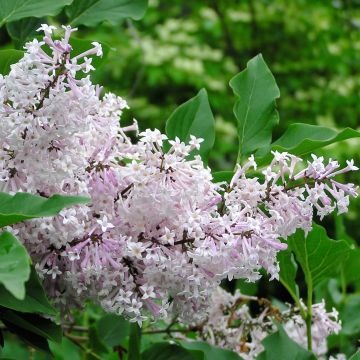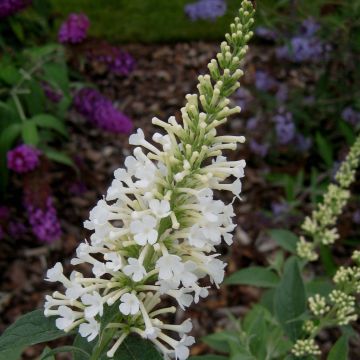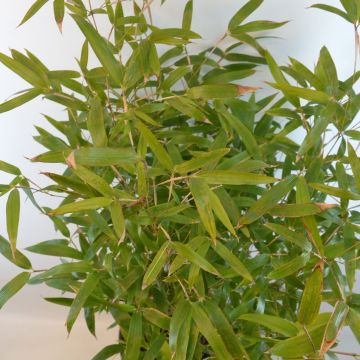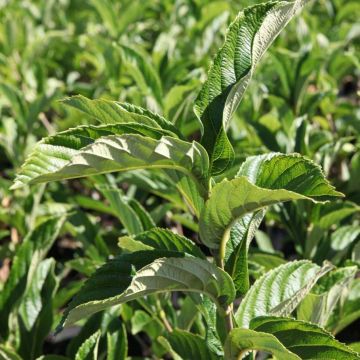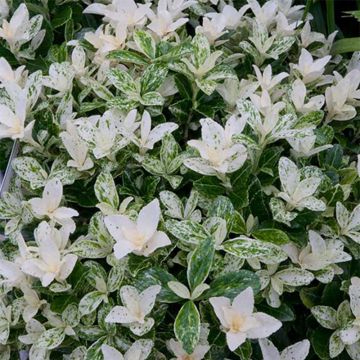

Syringa microphylla Superba - Lilac
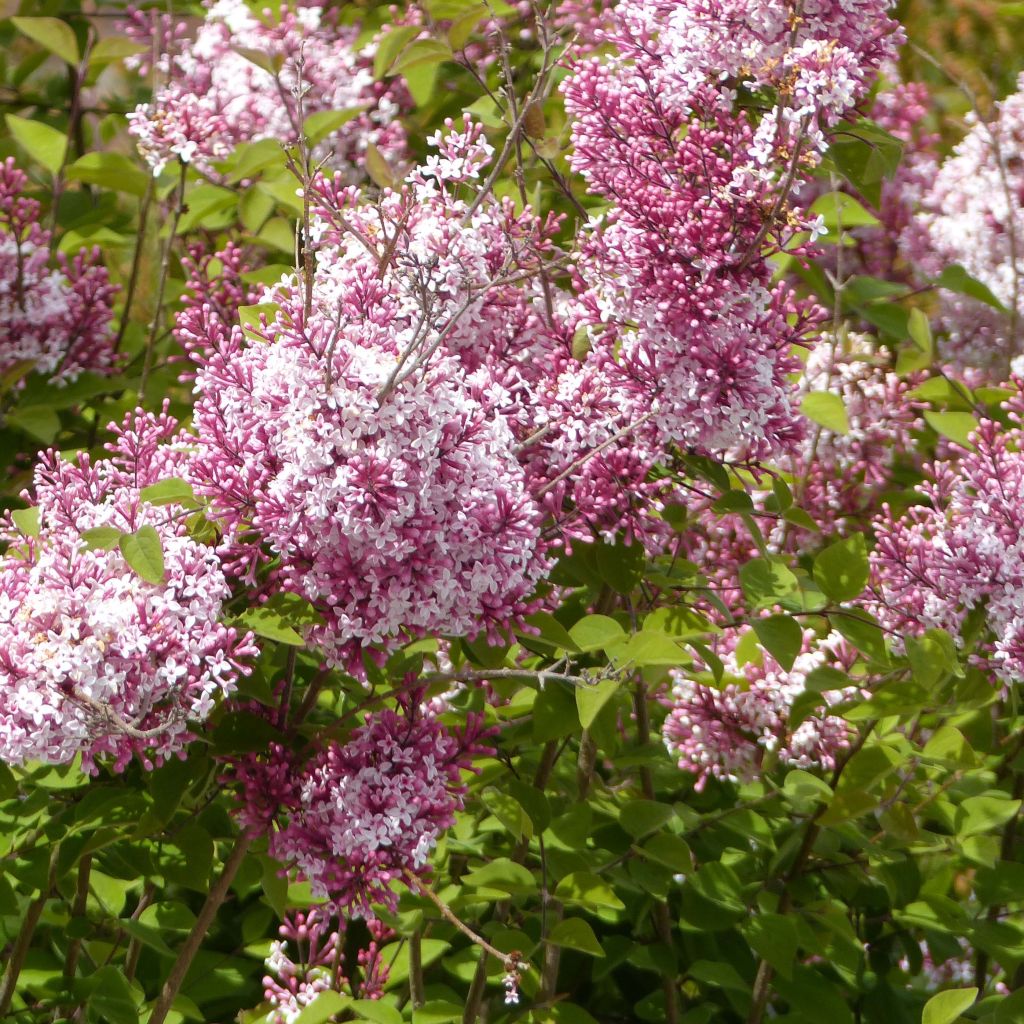

Syringa microphylla Superba - Lilac
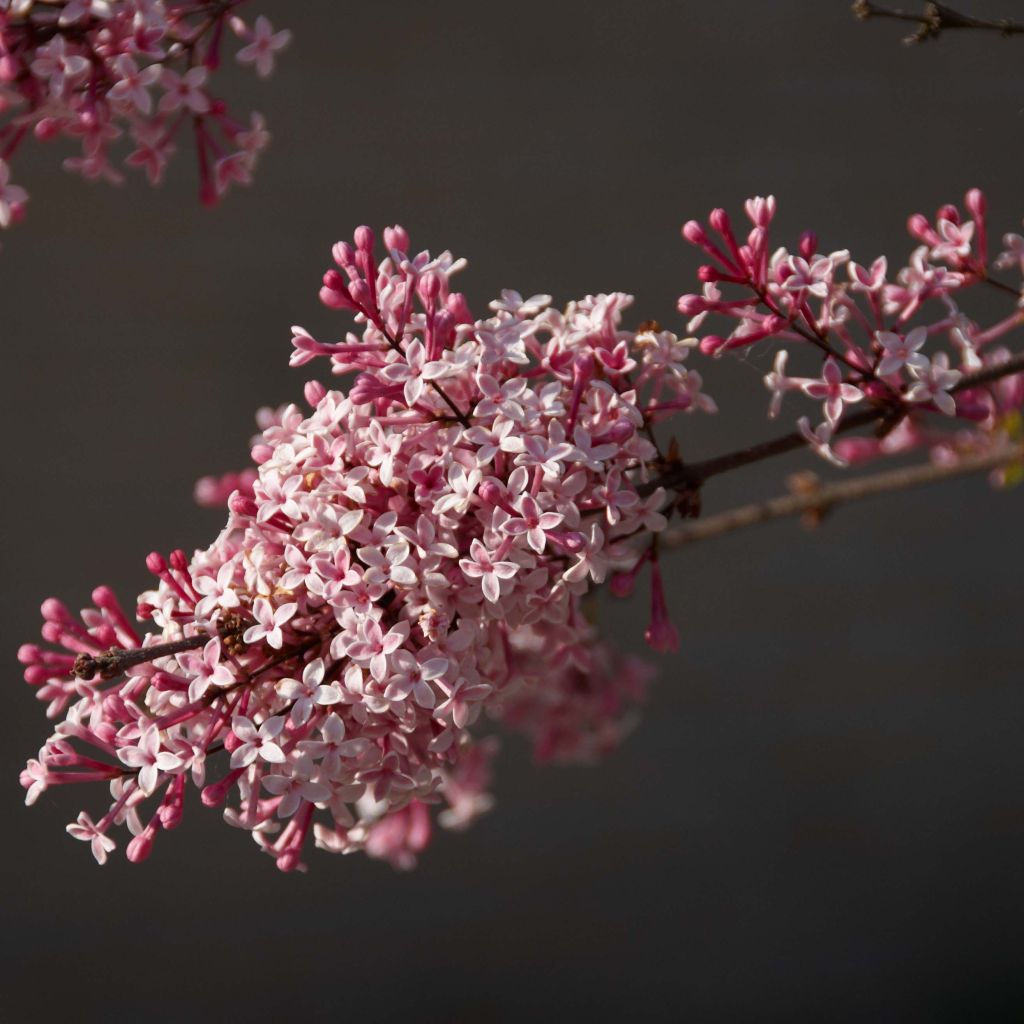

Syringa microphylla Superba - Lilac


Syringa microphylla Superba - Lilac
Syringa microphylla Superba - Lilac
Syringa microphylla Superba
Chinese Lilac
At "promesse de fleurs", the flowers live up to all their promises ????
M-H.R., 09/09/2024
This item cannot be shipped to the selected country
Delivery charge from €5.90
More information
Schedule delivery date,
and select date in basket
This plant carries a 24 months recovery warranty
More information
We guarantee the quality of our plants for a full growing cycle, and will replace at our expense any plant that fails to recover under normal climatic and planting conditions.
From €5.90 for pickup delivery and €6.90 for home delivery
Express home delivery from €8.90.


Does this plant fit my garden?
Set up your Plantfit profile →
Description
The Syringa microphylla 'Superba' is an excellent variety of Lilac with small leaves, more floriferous than the wild species commonly known as the Chinese Lilac. It is a modest-sized bush, not demanding, with a very natural bushy habit, which blooms abundantly in early spring and again more discreetly in early autumn. Its abundant, highly scented flower clusters are composed of tiny flowers that are deep pink on the outside and pale pink on the inside. This plant, which has many advantages, has been rewarded in England for its ornamental qualities and ease of cultivation.
The Syringa microphylla 'Superba' is a French horticultural creation by Léon Chenault, dating back to 1934. It comes from the Chinese Lilac, native to central China and Korea. In the wild, this bush grows along watercourses and in woods, often on limestone soil, up to an altitude of 3300 m (10826 ft 10 in). This lilac likes warmth, tolerates summer drought, as well as cold winters.
The Chinese Lilac 'Superba' has a rounded, dense habit with thin and hairy branches. Its growth is quite slow and it generally does not exceed 2 m (6 ft 7 in) in all directions. It blooms generously in April, and then more sporadically until autumn with a break during hot weather. The modest-sized pyramidal flower clusters are born on the previous year's wood. They consist of tiny tubular flowers in two shades of pink, spreading into 4 lobes. This fragrant flowering is also nectar-rich and honey-producing. The deciduous foliage is composed of much smaller leaves than those of the common lilac, they are hairy and orbicular in shape, with a long acuminate tip. They are fairly light green and turn yellow in autumn before falling.
The Syringa microphylla 'Superba' will satisfy owners of small gardens and gardeners without a garden who can adopt it in a large pot. It will also delight gardeners in the South, as the Chinese lilac tolerates long, hot and dry summers better than its exuberant big cousins, the common lilacs. Modest in appearance outside of flowering, this plant will benefit from being planted in a flowering hedge or in a bed with staggered flowering shrubs (mock oranges, Indian lilacs, roses, ceanothus, shrubby honeysuckles, etc.). The flowering of early irises and the first shrubby peonies beautifully accompany the flowering of this lilac. Its flowers are very suitable for creating romantic bouquets. Plant it near a path or terrace to fully enjoy its fragrance in spring.
Report an error about the product description
Syringa microphylla Superba - Lilac in pictures




Plant habit
Flowering
Foliage
Botanical data
Syringa
microphylla
Superba
Oleaceae
Chinese Lilac
Cultivar or hybrid
Other Syringa - Lilac
Planting and care
The Chinese Lilac Superba appreciates full sun and should be planted in ordinary soil, but deep and properly drained. It prefers slightly alkaline and fairly rich soils and is sensitive to strongly acidic soils. Once well rooted, this lilac does not need any watering in summer, including in Mediterranean areas. It will grow well in semi-shaded positions, but flowering will be reduced. Water it during the first two years in case of marked drought. You can prune the flowering branches to make beautiful bouquets, or at the end of flowering to promote the emergence of new flowers and avoid exhausting the bush. Avoid severe pruning that limits the spring flowering, unless your lilac becomes too large.
Planting period
Intended location
Care
-
, onOrder confirmed
Reply from on Promesse de fleurs
Hedge shrubs
Haven't found what you were looking for?
Hardiness is the lowest winter temperature a plant can endure without suffering serious damage or even dying. However, hardiness is affected by location (a sheltered area, such as a patio), protection (winter cover) and soil type (hardiness is improved by well-drained soil).

Photo Sharing Terms & Conditions
In order to encourage gardeners to interact and share their experiences, Promesse de fleurs offers various media enabling content to be uploaded onto its Site - in particular via the ‘Photo sharing’ module.
The User agrees to refrain from:
- Posting any content that is illegal, prejudicial, insulting, racist, inciteful to hatred, revisionist, contrary to public decency, that infringes on privacy or on the privacy rights of third parties, in particular the publicity rights of persons and goods, intellectual property rights, or the right to privacy.
- Submitting content on behalf of a third party;
- Impersonate the identity of a third party and/or publish any personal information about a third party;
In general, the User undertakes to refrain from any unethical behaviour.
All Content (in particular text, comments, files, images, photos, videos, creative works, etc.), which may be subject to property or intellectual property rights, image or other private rights, shall remain the property of the User, subject to the limited rights granted by the terms of the licence granted by Promesse de fleurs as stated below. Users are at liberty to publish or not to publish such Content on the Site, notably via the ‘Photo Sharing’ facility, and accept that this Content shall be made public and freely accessible, notably on the Internet.
Users further acknowledge, undertake to have ,and guarantee that they hold all necessary rights and permissions to publish such material on the Site, in particular with regard to the legislation in force pertaining to any privacy, property, intellectual property, image, or contractual rights, or rights of any other nature. By publishing such Content on the Site, Users acknowledge accepting full liability as publishers of the Content within the meaning of the law, and grant Promesse de fleurs, free of charge, an inclusive, worldwide licence for the said Content for the entire duration of its publication, including all reproduction, representation, up/downloading, displaying, performing, transmission, and storage rights.
Users also grant permission for their name to be linked to the Content and accept that this link may not always be made available.
By engaging in posting material, Users consent to their Content becoming automatically accessible on the Internet, in particular on other sites and/or blogs and/or web pages of the Promesse de fleurs site, including in particular social pages and the Promesse de fleurs catalogue.
Users may secure the removal of entrusted content free of charge by issuing a simple request via our contact form.
The flowering period indicated on our website applies to countries and regions located in USDA zone 8 (France, the United Kingdom, Ireland, the Netherlands, etc.)
It will vary according to where you live:
- In zones 9 to 10 (Italy, Spain, Greece, etc.), flowering will occur about 2 to 4 weeks earlier.
- In zones 6 to 7 (Germany, Poland, Slovenia, and lower mountainous regions), flowering will be delayed by 2 to 3 weeks.
- In zone 5 (Central Europe, Scandinavia), blooming will be delayed by 3 to 5 weeks.
In temperate climates, pruning of spring-flowering shrubs (forsythia, spireas, etc.) should be done just after flowering.
Pruning of summer-flowering shrubs (Indian Lilac, Perovskia, etc.) can be done in winter or spring.
In cold regions as well as with frost-sensitive plants, avoid pruning too early when severe frosts may still occur.
The planting period indicated on our website applies to countries and regions located in USDA zone 8 (France, United Kingdom, Ireland, Netherlands).
It will vary according to where you live:
- In Mediterranean zones (Marseille, Madrid, Milan, etc.), autumn and winter are the best planting periods.
- In continental zones (Strasbourg, Munich, Vienna, etc.), delay planting by 2 to 3 weeks in spring and bring it forward by 2 to 4 weeks in autumn.
- In mountainous regions (the Alps, Pyrenees, Carpathians, etc.), it is best to plant in late spring (May-June) or late summer (August-September).
The harvesting period indicated on our website applies to countries and regions in USDA zone 8 (France, England, Ireland, the Netherlands).
In colder areas (Scandinavia, Poland, Austria...) fruit and vegetable harvests are likely to be delayed by 3-4 weeks.
In warmer areas (Italy, Spain, Greece, etc.), harvesting will probably take place earlier, depending on weather conditions.
The sowing periods indicated on our website apply to countries and regions within USDA Zone 8 (France, UK, Ireland, Netherlands).
In colder areas (Scandinavia, Poland, Austria...), delay any outdoor sowing by 3-4 weeks, or sow under glass.
In warmer climes (Italy, Spain, Greece, etc.), bring outdoor sowing forward by a few weeks.

































